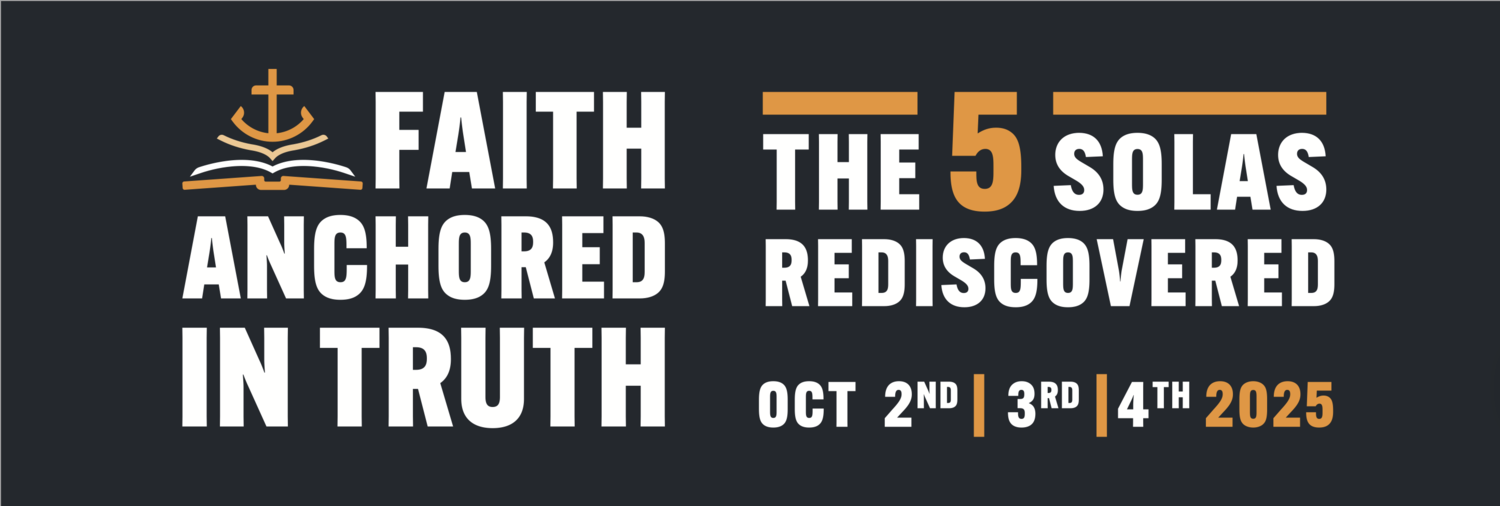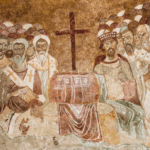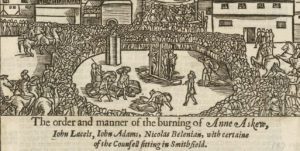With the belated discovery of Israel Folau’s aberrant views on the Trinity, all manner of excited conversation has sprung up around the doctrine and its significance. Here is an attempt to frame that discussion with a little historical background … and to urge a little humble reflection on whether we understand the doctrine of the Trinity well enough ourselves.
The Problem
Oneness Pentecostalism (OP) is a form of modalism. It regards Jesus as God but fails to distinguish his personal existence from that of God the Father (or the Spirit). It makes each of them roles or masks of the one willing and acting Spirit and denies that they really relate to or love each other. Where the Bible seems to indicate this, OP sees it as a reference to the love of God for humanity:
What these verses express is the relationship between the two natures of Christ … the Son came to the world to show us how much God loves us and also to be our example. For these two objectives to be achieved, the Father and the Son showed love for each other. God knew before the world began that He would manifest Himself as the Son.
(David K. Bernard, The Oneness of God)
This might seem like a painfully flimsy reading of the passages such as John 17:24. But we shouldn’t be so quick to sneer. Oneness theology has deep roots in Christian history and reflects a problem that has been very hard to eradicate. As we will see below, its weaknesses have a habit of showing up in surprising places.
We shouldn’t be so quick to sneer. Oneness theology has deep roots in Christian history and its weaknesses have a habit of showing up in surprising places.
Oneness Tendencies amongst the Church Fathers
Tertullian of Carthage (c.155—240AD), the great Christian apologist who gave us the term “Trinity”, also gave us one of the first denunciations of oneness theology in his polemical essay against the modalist Praxeas. As he saw it, Praxeas—by rejecting the “economy” (oikonomia) of God as Father, Son and Spirit—”put to flight the Paraclete, and crucified the Father.” (AdvPrax 1)
But Tertullian did not believe that the persons of the Trinity were eternal either. For him, the Son was originally God’s “thought (or Consciousness) which the Greeks call logos.” Only with the act of creation did this impersonal Logos come forth as a person: “He became also the Son of God, and was begotten when He proceeded forth from Him.” (AdvPrax 7).
Tertullian was not the first nor the last to think like this. After the Council of Nicaea in 325AD, many Greek-speaking bishops worried that this was exactly what the Creed meant by declaring that the Son was of one essence (homoousios) with the Father. And they seemed confirmed in their suspicions when Bishop of Marcellus of Ancyra claimed exactly that. He took a similar line to Tertullian: the Logos had come forth from God in time and would one day return to his sub-personal state within God when history was finished. It was to combat this very theory that the line “and his [Christ’s] kingdom shall have no end” was added to the Nicene Creed in 381AD.
Nicene Consensus
One of the main problems facing the fathers as they thrashed these things out was a lack of precise terminology. For some of them, the Nicene language of one essence (homoousios) seemed to indicate one individual person—so they countered this by declaring that the Son was different from, but like God the Father—homoiousios. But where did that leave the unity between the Father and Son? Was Jesus God or not?
The solution came from bishops like Athanasius of Alexandria and Hilary of Poitiers. They worked hard to explain that ousia (essence) was about nature—not individual existence. God the Father and Son share one ousia because that’s what it means to be a father and son:
… the Son is the image of the Father in species, and not dissimilar in genus; since the similarity of a Son begotten of the substance of His Father does not admit of any diversity of substance … and this is to be truly Son, to reflect the truth of the Father’s form by the perfect likeness of the nature imaged in Himself. (Hilary, DeSyn, 3)[1]
In the East, the three great Cappadocian Bishops (Basil of Caesarea, his brother Gregory of Nyssa and friend Gregory of Nazianzen) agreed:
He is called Son because He is identical with the Father in Essence; and not only for this reason, but also because he is of Him … the living reproduction of the Living One, and is more exactly like than was Seth to Adam, or any son to his father. (Gregory Nazianzen, Oratio 30.20 ).
Gregory of Nyssa applied the same analogy to humanity in general. For him, it was strictly a mistake to speak of “many men”. “Man” is a word for nature and there is only one—just as there is one sort of “gold”—so we don’t say “many golds” (AdAblabius ). His brother, Basil described the same thing using the terminology of ousia and hypostasis:
Ousia has the same relation to hypostasis as the common has to the particular. Every one of us both shares in existence by the common term of essence (ousia) and by his own properties is such-and-such a one. (Basil of Caesarea, Letter 214)
Confusion in the West
Notice that for these heroes of the fourth century, the essence or ousia of God was something utterly mysterious. They didn’t know what God’s essence was any more than they (in their prescientific understanding) knew how humans could share a common nature. Ousia was a placeholder for whatever it was that made the Father ‘God’ and which he (again, mysteriously) eternally communicated to his Son.
But Ambrose of Milan and his (more famous) disciple Augustine changed that in western Europe. They started thinking of the essence of God as a concrete thing—almost like a super-person within which you would find the Father, Son and Spirit. You can see the difference between this and the Nicene way of thinking when you compare the opening of the Nicene Creed—”We believe in God, the Father … and his Son”—with the start of the Augustinian confession known as the Athanasian Creed—”we worship one God in trinity and the trinity in unity”.
By the Middle Ages this (implicit) three-persons in one-person way of thinking about God had become so established that Thomas Aquinas imagined that the triune being of God might just as easily become incarnate as the person of the Son (see Summa 3.3.3)
The Modern Muddle
From what I have observed this is still the way many modern evangelicals think and talk today. When we say God is “three persons in one being” we don’t think “three persons sharing one essence/nature”—which is what we should think because “being” is standing in for ousia. Instead, we think of being as in “human being”—a distinct, concrete individual entity: a person, in other words. Without realising it, we’ve gone back to exactly the same misunderstanding of homoousios that caused so much trouble in the fourth century.
We’ve gone back to exactly the same misunderstanding of homoousios that caused so much trouble in the fourth century.
It is this muddle that sometimes causes us to fumble in our prayers and thank God for sending his Son and for coming down and also for becoming flesh and dying on the cross. We aren’t sure what we mean by “God” Is it “God the Father”? Or, is it the super-person who is the Trinity? If it’s the first then he sent Jesus. If it’s the second then it seems okay to thank him for becoming human—even though it suddenly makes us sound like … well, like Oneness Pentecostals.
We need to do better than this.
Time to Think Harder About the Trinity
My point in writing this post is not to say we should be taking it easy on trinitarian heresy. Nor is it to say that we must either all become experts on fourth century theology or cover our mouths.
But I am saying that many of us should be taking a closer look at some of our own assumptions when it comes to the Trinity. We should be working harder at explaining what we mean when we talk about the doctrine of the Trinity. We should be asking what it means when the Bible calls Jesus God’s Son; what it means when it says he “was God” and was “with God.” We should be able to offer some kind of sensible answer when somebody asks us what we mean when we say that God is “one being”.
Our great forebears, the bishops and theologians of the fourth century had good answers to these questions. They didn’t think that the Trinity was a nonsense or a contradiction. They believed it was something that could be found in Scripture. They saw it as a reality that cast shadows on the patterns of our created lives such that we could begin to understand it.
We would do well to strive for the same confidence and speak with the same clarity.
Read More.
Want to get a better handle on trinitarian orthodoxy? Athanasius’ On the Incarnation of the Son would be a great place to start.
[1] Of course, all the orthodox fathers who used these analogies were well aware that they were imperfect and that there are also significant differences between human parenting – which happens in time and produces persons with separate powers etc. – from God’s perfect and eternal fatherhood.
















